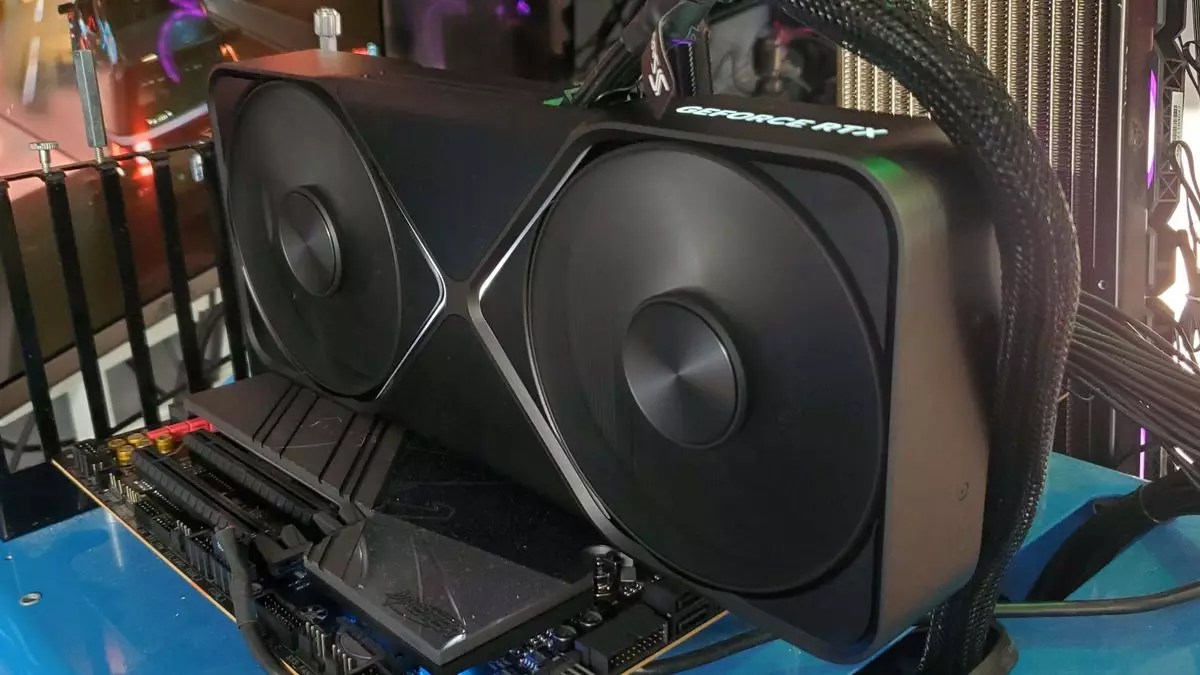When purchasing a high-end graphics card like the RTX 5090, there are many factors to consider that can impact the performance and safety of your system. Among these factors, power supply unit (PSU) connections stand out as a vital concern that can either enhance or hinder your gaming experience. With limited availability and high demand for the RTX 5090, many eager gamers may consider accessorizing their setup with flashy power cables. However, expert advice warns against this temptation, emphasizing the importance of using the correct power configurations instead.
Understanding the Risks of Adapters and Extenders
In a world where technological advancements often come with customizable add-ons, the prospect of using adapters and extenders can seem appealing. However, experts like Aris Mpitziopoulos, CEO of Cybenetics, unequivocally advise against it. His stern warning of “Do not buy adapters or extenders” encapsulates the potential hazards associated with these components. Unreliable or improperly designed connections can lead to overheating or even melting, particularly when your RTX 5090 draws a significant current of 48 amps or more.
The primary concern lies not just with the adapters themselves but with the overall electrical compatibility of different components. While all varied designs of 12V-2×6 cables are theoretically capable of delivering approximately 600W, the issue arises when these cables interface with older or incompatible PSU designs. It’s not simply a matter of size compatibility; the internal wiring and load distribution must also align correctly to prevent catastrophic failures.
A high-end GPU like the RTX 5090 demands a stable and sufficient power supply to operate at peak performance. This requires more than just a standard PSU; it demands an understanding of power ratings, connector types, and the potential consequences of using non-native cables. The graphic card’s performance is compromised when not paired with a proper PSU setup, risking not only efficiency but also the longevity of your equipment.
Mpitziopoulos highlights that while many power supplies boast compatibility through adapters, the reality is far more complex. Take, for example, Corsair’s 2024 Shift RM PSUs, which come with a proprietary 12VHPWR cable designed to be compatible with their specific PSUs. Deviating even slightly from the factory-issued cables risks introducing flaws in power delivery that can compromise system stability.
The evolution from older PSU designs to the newer 12V-2×6 configuration poses its own challenges. While original designs utilized 8-pin cables, these modern connectors aim to minimize risks through improved safety features, such as specific pin configurations that prevent improper connections. Yet Aris warns that not all manufacturers have migrated to this updated standard, creating a patchwork of possibilities that various setups might employ.
It’s worth noting, however, that manufacturers like Nvidia and board partners often provide adequate adapters that meet safety and performance standards. The real danger lies within third-party options that lack quality assurance. Although a user may experience success with an older model like the RTX 4090, the RTX 5090’s increased demands expose weaknesses in those adapters.
The Takeaway: Invest in Quality
Ultimately, the message is clear: investing in the right PSU is just as crucial as the GPU purchase itself. Gamers must revert their focus from mere aesthetics to functional integrity when setting up their systems. Having a dedicated PSU with a properly designed connection specifically for the RTX 5090 can save significant trouble in the long run.
Upgrading a system is both exciting and fraught with the potential for missteps, especially when one considers the exorbitant price tag of modern graphics cards. The stakes are higher than ever; a single faulty connection could spell disaster, leading to damage not only to expensive hardware but also to valuable gaming experiences. Therefore, take heed of the expert’s counsel: think twice before splashing out on flashy power cables or dubious third-party adapters. When it comes to the RTX 5090, the most prudent route is to stick with manufacturer-recommended solutions and prioritize safety above all else.
In a landscape brimming with choices, let the knowledge shared by industry leaders guide your investments and decisions. Careful consideration of your system’s power supply setup will ensure that you maximize your gaming investment while safeguarding your hardware’s integrity.


Leave a Reply